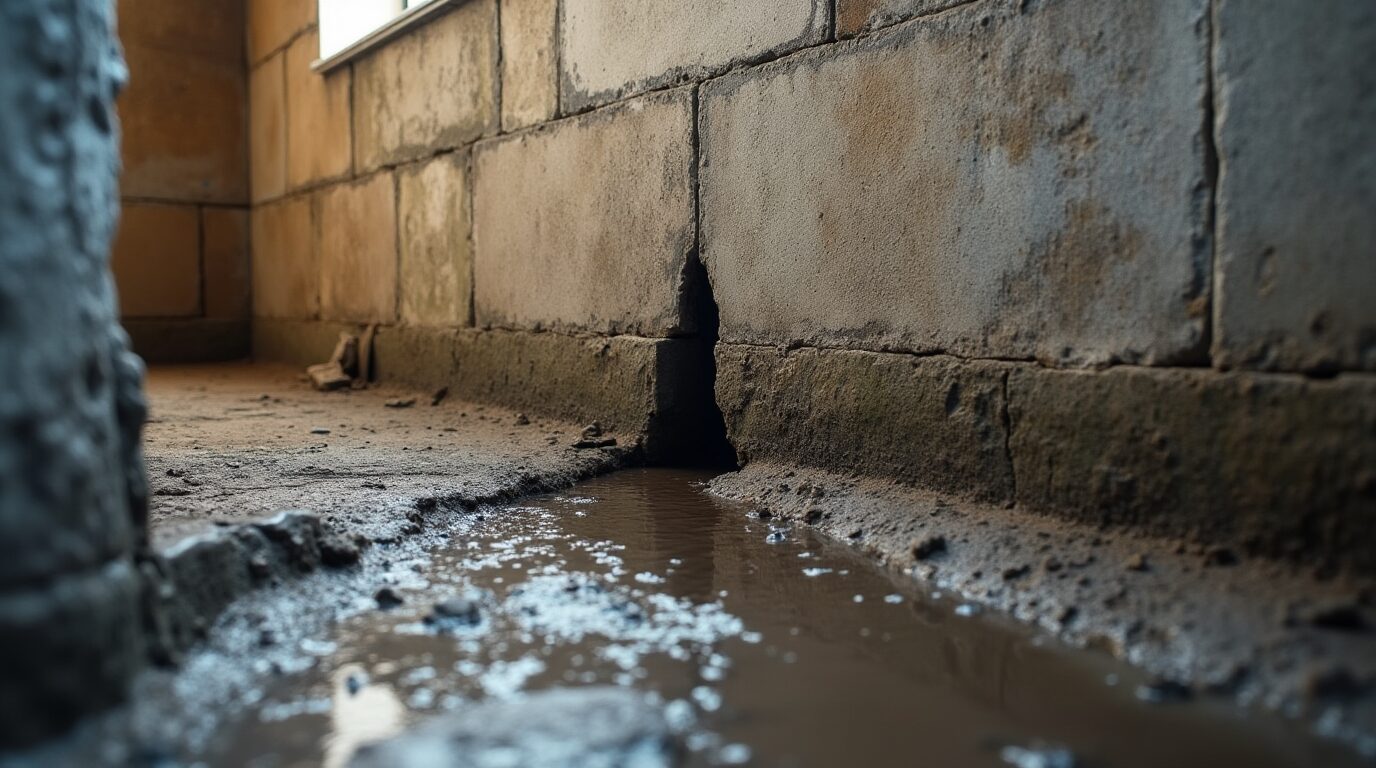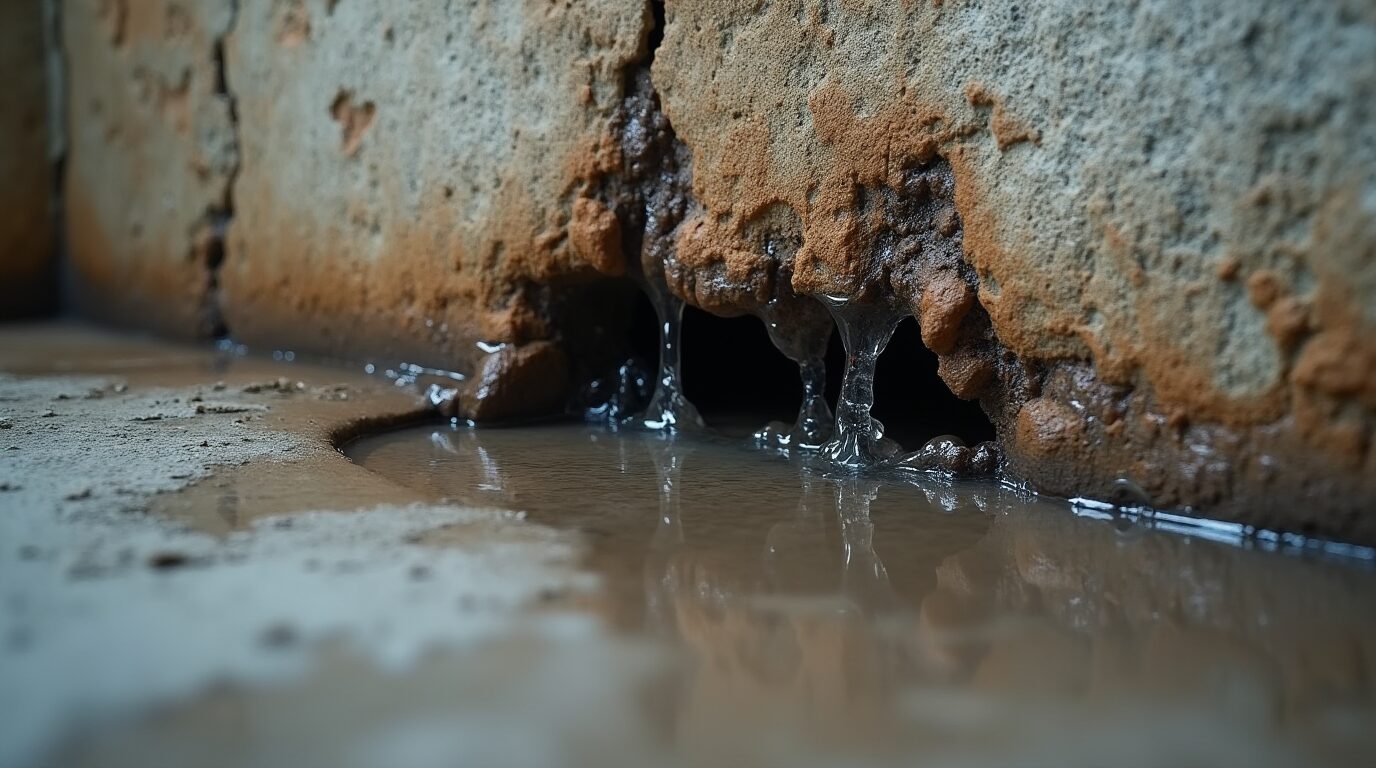
Top Causes Of Basement Flooding And How To Address Them
By: 911 Water Damage Experts
A flooded basement is more than a nuisance—it is a costly and potentially dangerous issue that can damage your property and pose health risks. Whether the water comes from outside or inside your home, identifying the source and taking quick action can prevent long-term consequences.
Let’s get right into it!
Why Basement Flooding Happens And Why It Matters
Basement flooding affects thousands of Canadian homeowners every year, leading to insurance claims, structural damage, and mould growth. According to the Insurance Bureau of Canada, the average cost of a flooded basement is over $40,000. Knowing what causes basement flooding and how to stop it is critical to protecting your investment and your family’s health.
Surface Water Intrusion
Poor Grading And Surface Drainage
If the ground around your home slopes toward the foundation, water will flow directly into the basement walls. Improper grading can result in pooling and seepage during heavy rainfalls. The soil should slope away from the home by at least 2 percent to direct water away from the structure.
Blocked Gutters And Downspouts
Clogged eavestroughs and downspouts allow water to overflow next to your foundation. Water accumulates near basement walls and can penetrate through cracks or unsealed joints. Downspouts should discharge water at least two metres from the foundation to prevent infiltration.
Patio, Driveway And Neighbour Runoff
Sloped driveways or patios without proper drainage systems can funnel water toward your foundation. In dense urban areas, runoff from neighbouring properties can also increase your flood risk, especially during extreme weather.
Foundation And Wall Failures
Cracks In Foundation Walls
Small cracks may seem harmless, but over time they allow moisture and water to seep into the basement. Pressure from saturated soil can widen these cracks, leading to major leaks. Regular inspections can catch these early and prevent worsening damage.
Hydrostatic Pressure Buildup
When the ground around your home becomes saturated, hydrostatic pressure forces water through walls and floors. This pressure can lift basement slabs or cause water to seep in through seams and pores in the concrete.
Sub-Soil Composition And Groundwater Table
Homes built on clay-heavy or poorly drained soils are more prone to flooding. A high groundwater table increases the likelihood of water entering the basement during storms or spring thaws.
Plumbing Leaks And Internal Sources
Leaking Water Supply Or Drain Lines
Pipes behind walls or ceilings may leak for weeks before being noticed. Over time, even a slow drip can lead to significant damage, especially when coupled with humidity and organic materials that encourage mould growth.
Sewage Backups (Sump-Pit Overflow)
A failed sump pump or blocked sewer can cause raw sewage to back up into the basement. This is not only unsanitary but also extremely expensive to remediate. Municipalities may offer subsidies for installing backflow preventers and sump pumps.
Appliance Malfunctions (Water Heaters, Washers)
Water heaters, laundry machines, and utility sinks are common culprits. If located in the basement, a failed hose or tank can release litres of water in minutes. Install leak sensors and shutoff valves to reduce the risk.
Preventative Measures And Repair Solutions
Exterior Waterproofing Membranes
Waterproofing the foundation from the outside is one of the most effective ways to prevent seepage. This includes excavating around the foundation, applying a waterproof membrane, and adding a drainage board. It is labour-intensive but highly effective.
Interior Sealants And Sump Pump Systems
Interior solutions involve applying waterproof coatings on walls and installing sump pump systems to manage internal water. Battery backups are essential in case of power outages during storms.
French Drains And Perimeter Drain Tiles
French drains redirect water away from the foundation using gravel and perforated pipe systems. When installed properly, these systems relieve pressure and guide water to safe discharge points, keeping your basement dry even in heavy rain.
FAQs
1. What Is The Most Common Cause Of Basement Flooding?
Surface water intrusion from poor grading and clogged gutters is the leading cause of basement floods in Canada.
2. Can A Basement Flood Even If It Has Never Happened Before?
Yes, changes in weather patterns, property grading, or nearby construction can suddenly expose vulnerabilities.
3. Is Basement Flooding Covered By Insurance In Canada?
It depends on the policy. Overland flood coverage and sewer backup insurance are often add-ons, not standard.
4. What Is The Fastest Way To Remove Water From A Basement?
Using a submersible pump followed by wet vacuums and dehumidifiers is the most efficient method.
5. How Do I Know If My Sump Pump Is Working?
Test it by pouring water into the pit. If it does not activate or drain properly, it may need maintenance or replacement.
6. What Health Risks Are Associated With A Flooded Basement?
Mould, bacteria, and airborne toxins can cause respiratory issues, skin irritation, and other health problems.
7. How Much Does It Cost To Waterproof A Basement In Canada?
Waterproofing costs range from $5,000 to $15,000 depending on the size, method, and foundation condition.
8. Can I Prevent Basement Flooding Without Excavation?
Yes, interior sealants, sump pumps, and improved drainage can help reduce risk without excavation.
9. How Often Should I Check My Basement For Flood Risks?
Check before spring thaw and after heavy rains. Regular maintenance of gutters, pumps, and grading is crucial.
10. Does Landscaping Affect Basement Flooding?
Absolutely. Poorly placed flower beds, retaining walls, and hardscapes can redirect water toward your foundation.
Conclusion
Basement flooding is a serious issue with multiple causes—many of which are preventable. From simple gutter maintenance to full-scale waterproofing, proactive steps can save you tens of thousands of dollars and protect your home. By identifying the warning signs and acting early, you can keep your basement dry, safe, and structurally sound.
If you have any questions about water damage and water damage restoration feel free to call us at 1-833-WE-DRY-IT or chat with us in near real-time on our Facebook fan page.



